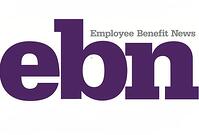
Spencer Williams
As President and CEO, J. Spencer Williams applies more than 25 years of experience in starting, building and leading businesses in the financial services industry. Under his leadership, Retirement Clearinghouse has introduced new industry best practices, been recognized for innovation, improved the operations of thousands of retirement plans, and enhanced the retirement prospects of hundreds of thousands of retirement plan participants.
-
Blog
- 401k Cash Outs
- 401k Consolidation
- 401k Plan Termination
- America's Mobile Workforce
- Assisted Roll-in
- Auto Enrollment
- Auto Portability
- Auto Portability Simulation
- Automatic Roll-In
- Automatic Rollover
- Automatic Rollovers
- Boston Research Technologies
- CARES act
- Common Mistakes
- DIY Roll-In
- DOL Advisory Opinion
- EBRI
- Employee Benefit News
- ERISA Advisory Council
- Financial Services Roundtable
- Financial Wellness
- How-To
- In-Plan Consolidation
- Leakage
- Lifetime Plan Participation
- Lost Participants
- Managed Portability
- Mandatory Distributions
- MarketWatch
- Missing Participant IRA
- Missing Participants
- National Retirement Savings Cash Out Clock
- Participant Transition Management
- PLANSPONSOR
- Portability Services Network
- PSCA
- Public Policy
- RCH Services
- Retirement Income
- Retirement Plan Portability
- retirement research
- Retirement Savings Consolidation
- Retirement Savings Portability
- Roll-In
- Safe Harbor IRA
- Saver's Match
- Security
- Small Accounts
- Stale Dated Checks
- Synthetic Tenure
- Uncashed Check Services
- Uncashed Distribution Checks
- Video
- Webcast
- What is a Missing Participant?
Consolidation Corner Blog
Consolidation Corner is the Retirement Clearinghouse (RCH) blog, and features the latest articles and bylines from our executives, addressing important retirement savings portability topics.
Financial Literacy Can Help Close the Minority Wealth Gap for Retirement Savings
 Knowledge is power, as the saying goes. As Americans observe another Financial Literacy Month, members of the retirement services industry have an opportunity to pause and think about how they can help empower more people to achieve a financially secure retirement.
Knowledge is power, as the saying goes. As Americans observe another Financial Literacy Month, members of the retirement services industry have an opportunity to pause and think about how they can help empower more people to achieve a financially secure retirement.
A No-Brainer Benefit that Advisors can Bring to Plan-Sponsor Clients
 The passage of the Securing a Strong Retirement Act of 2022 (known as “SECURE 2.0”) reinforces the bipartisan commitment in Congress to helping Americans save more for retirement. Signed into law as part of a $1.7 trillion omnibus spending bill signed by President Biden on December 29, the legislation includes a variety of provisions, including the expansion of automatic enrollment in 401(k) and 403(b) plans. Fortuitously, SECURE 2.0 measures related to auto portability come shortly after the launch of an industry initiative to make auto portability—a technology solution that can operate in tandem with auto enrollment to optimize plan participants’ retirement outcomes—much more accessible to plan sponsors across the country.
The passage of the Securing a Strong Retirement Act of 2022 (known as “SECURE 2.0”) reinforces the bipartisan commitment in Congress to helping Americans save more for retirement. Signed into law as part of a $1.7 trillion omnibus spending bill signed by President Biden on December 29, the legislation includes a variety of provisions, including the expansion of automatic enrollment in 401(k) and 403(b) plans. Fortuitously, SECURE 2.0 measures related to auto portability come shortly after the launch of an industry initiative to make auto portability—a technology solution that can operate in tandem with auto enrollment to optimize plan participants’ retirement outcomes—much more accessible to plan sponsors across the country.
A New Year’s Resolution for Sponsors: Facilitate Automated Plan-to-Plan Portability for Your Participants
 At a time when terms like “inflation,” “gas prices,” “recession,” and “volatility” dominate chatter about the U.S. economy, plan sponsors and recordkeepers are likely fielding questions and concerns from participants. Every dollar counts when saving for a financially secure retirement, especially with the present volatility in the financial markets. But while investment fund options, asset classes, and fees are important for helping participants weather inflation and save more, there is another way that sponsors and recordkeepers can help participants protect, and increase, their retirement savings in the New Year—facilitate portability.
At a time when terms like “inflation,” “gas prices,” “recession,” and “volatility” dominate chatter about the U.S. economy, plan sponsors and recordkeepers are likely fielding questions and concerns from participants. Every dollar counts when saving for a financially secure retirement, especially with the present volatility in the financial markets. But while investment fund options, asset classes, and fees are important for helping participants weather inflation and save more, there is another way that sponsors and recordkeepers can help participants protect, and increase, their retirement savings in the New Year—facilitate portability.
Every Dollar Saved for Retirement Matters -- So Save More By Avoiding Cash-Outs & Consolidating 401(k) Accounts
 Retired Baby Boomers who are saving for retirement through defined contribution plans like 401(k)s are drawing down their savings faster than their counterparts in previous generations who had pensions and other defined benefit plans, according to recent industry research. And on top of that, Baby Boomers who may be relying solely on their defined contribution plans may wind up with less savings for retirement than their counterparts who waited longer to withdraw savings from their defined benefit plans—and could, therefore, outlive their nest eggs.
Retired Baby Boomers who are saving for retirement through defined contribution plans like 401(k)s are drawing down their savings faster than their counterparts in previous generations who had pensions and other defined benefit plans, according to recent industry research. And on top of that, Baby Boomers who may be relying solely on their defined contribution plans may wind up with less savings for retirement than their counterparts who waited longer to withdraw savings from their defined benefit plans—and could, therefore, outlive their nest eggs.
Newly Proposed Legislation Can Help Resolve America’s Retirement-Savings Gaps
 Vanguard’s How America Saves report for 2022 provided cause for optimism with some of its findings. For example, employee participation rates in Vanguard-managed defined contribution plans remain high, and have not declined year-over-year during the pandemic. The majority of participants in Vanguard plans also increased or maintained their contributions last year, and the average account balance for Vanguard participants increased by 10% year-over-year, to $141,542.
Vanguard’s How America Saves report for 2022 provided cause for optimism with some of its findings. For example, employee participation rates in Vanguard-managed defined contribution plans remain high, and have not declined year-over-year during the pandemic. The majority of participants in Vanguard plans also increased or maintained their contributions last year, and the average account balance for Vanguard participants increased by 10% year-over-year, to $141,542.
The Next Area to Tackle for Preserving Retirement Savings: Uncashed Distribution Checks
 Last year marked the 15th anniversary of the Pension Protection Act of 2006. This legislation included well-intentioned provisions for helping Americans increase their retirement savings, including the capability for defined contribution plan sponsors to automatically enroll employees in their plans. Despite the good intentions behind auto enrollment, and all the positive outcomes that have resulted, its introduction also coincided with high workforce mobility and a lack of seamless plan-to-plan savings portability, which has led to a surge in small, stranded 401(k) savings accounts.
Last year marked the 15th anniversary of the Pension Protection Act of 2006. This legislation included well-intentioned provisions for helping Americans increase their retirement savings, including the capability for defined contribution plan sponsors to automatically enroll employees in their plans. Despite the good intentions behind auto enrollment, and all the positive outcomes that have resulted, its introduction also coincided with high workforce mobility and a lack of seamless plan-to-plan savings portability, which has led to a surge in small, stranded 401(k) savings accounts.
The ‘Great Resignation’ Screams for Improved Retirement-Savings Portability
 COVID-19 has altered so much in our nation, and our world, over the past two years. Many of us learned to stop and smell the roses during lockdowns, and count our blessings, especially health and family. For those who were fortunate enough to remain employed full-time during the pandemic and could work remotely, videoconferencing tools like Zoom and Microsoft Teams suddenly became indispensable for conferring with colleagues and customers.
COVID-19 has altered so much in our nation, and our world, over the past two years. Many of us learned to stop and smell the roses during lockdowns, and count our blessings, especially health and family. For those who were fortunate enough to remain employed full-time during the pandemic and could work remotely, videoconferencing tools like Zoom and Microsoft Teams suddenly became indispensable for conferring with colleagues and customers.
Assessing the State of DC Plans & Retirement Savings, 15 Years After the Pension Protection Act
 Traditionally, the anniversary gift for couples celebrating their 15th wedding anniversary is crystal. When the Pension Protection Act of 2006 was signed into law 15 years ago, a crystal ball would have been useful. Although this legislation was (commendably) crafted with the best of intentions, its unintended consequences for defined contribution plan participants and sponsors continue to reverberate.
Traditionally, the anniversary gift for couples celebrating their 15th wedding anniversary is crystal. When the Pension Protection Act of 2006 was signed into law 15 years ago, a crystal ball would have been useful. Although this legislation was (commendably) crafted with the best of intentions, its unintended consequences for defined contribution plan participants and sponsors continue to reverberate.
Refundable Saver’s Tax Credits Would Significantly Reduce Retirement Savings Shortfall—Especially for Minorities
 Concurrent with the COVID-19 pandemic, our elected representatives have been grappling with the issue of wealth disparities between America’s white and minority workers. Commendably, there has been bipartisan support in Washington, DC for measures to assist those who are historically under-served or under-saved in our national system for accumulating and incubating retirement savings.
Concurrent with the COVID-19 pandemic, our elected representatives have been grappling with the issue of wealth disparities between America’s white and minority workers. Commendably, there has been bipartisan support in Washington, DC for measures to assist those who are historically under-served or under-saved in our national system for accumulating and incubating retirement savings.
Don’t Relegate Lost & Missing Accounts to the Lost & Found—Consolidate Them in the Retirement System
 The Securing a Strong Retirement Act of 2021, nicknamed the “SECURE (Setting Every Community Up for Retirement Enhancement) Act 2.0,” was passed unanimously by the House Ways and Means Committee, and many expect the bill to pass the full House of Representatives.
The Securing a Strong Retirement Act of 2021, nicknamed the “SECURE (Setting Every Community Up for Retirement Enhancement) Act 2.0,” was passed unanimously by the House Ways and Means Committee, and many expect the bill to pass the full House of Representatives.
-
Blog
- 401k Cash Outs
- 401k Consolidation
- 401k Plan Termination
- America's Mobile Workforce
- Assisted Roll-in
- Auto Enrollment
- Auto Portability
- Auto Portability Simulation
- Automatic Roll-In
- Automatic Rollover
- Automatic Rollovers
- Boston Research Technologies
- CARES act
- Common Mistakes
- DIY Roll-In
- DOL Advisory Opinion
- EBRI
- Employee Benefit News
- ERISA Advisory Council
- Financial Services Roundtable
- Financial Wellness
- How-To
- In-Plan Consolidation
- Leakage
- Lifetime Plan Participation
- Lost Participants
- Managed Portability
- Mandatory Distributions
- MarketWatch
- Missing Participant IRA
- Missing Participants
- National Retirement Savings Cash Out Clock
- Participant Transition Management
- PLANSPONSOR
- Portability Services Network
- PSCA
- Public Policy
- RCH Services
- Retirement Income
- Retirement Plan Portability
- retirement research
- Retirement Savings Consolidation
- Retirement Savings Portability
- Roll-In
- Safe Harbor IRA
- Saver's Match
- Security
- Small Accounts
- Stale Dated Checks
- Synthetic Tenure
- Uncashed Check Services
- Uncashed Distribution Checks
- Video
- Webcast
- What is a Missing Participant?
